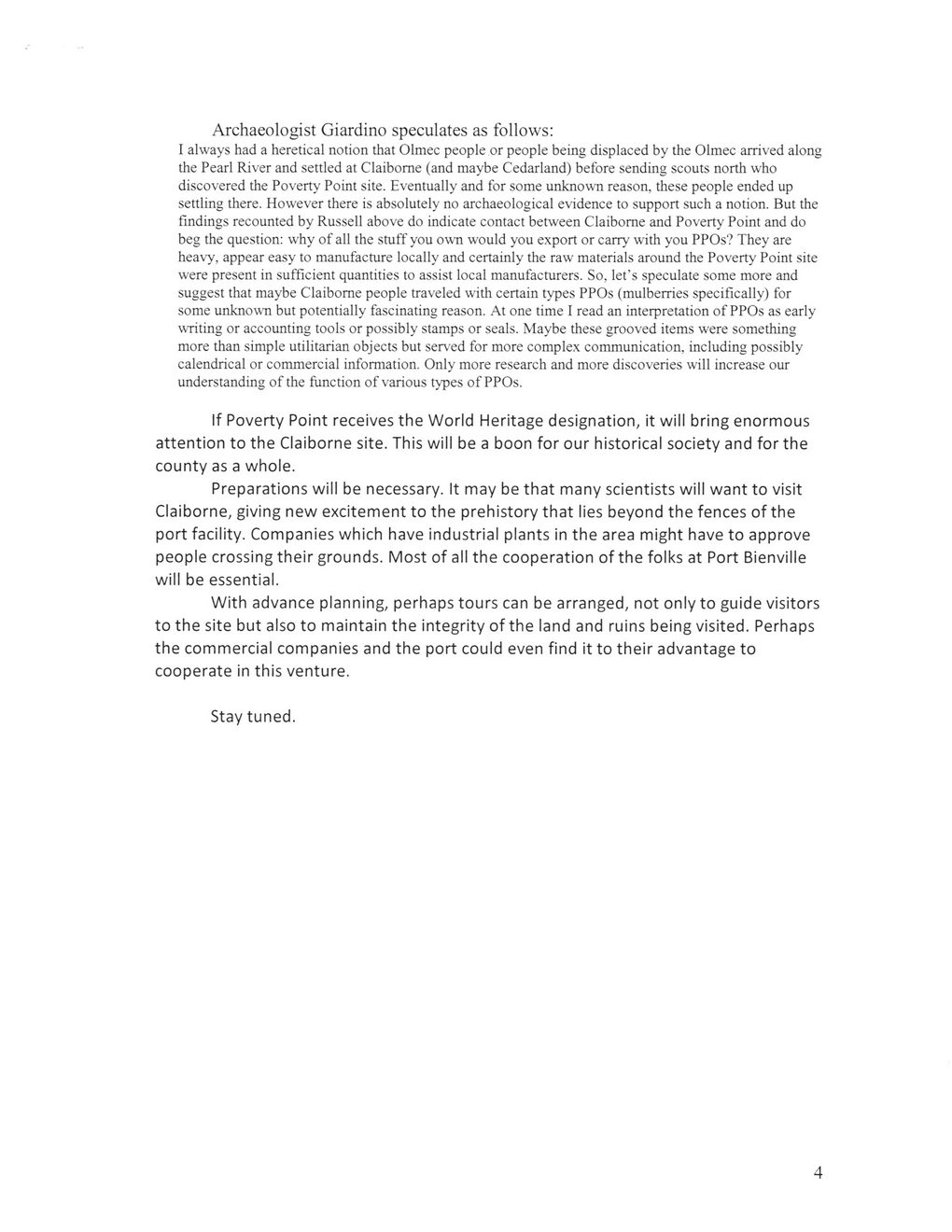This text was obtained via automated optical character recognition.
It has not been edited and may therefore contain several errors.
Archaeologist Giardino speculates as follows: I always had a heretical notion that Olmec people or people being displaced by the Olmec arrived along the Pearl River and settled at Claiborne (and maybe Cedarland) before sending scouts north who discovered the Poverty Point site. Eventually and for some unknown reason, these people ended up settling there. However there is absolutely no archaeological evidence to support such a notion. But the findings recounted by Russell above do indicate contact between Claiborne and Poverty Point and do beg the question: why of all the stuff you own would you export or carry with you PPOs? They are heavy, appear easy to manufacture locally and certainly the raw materials around the Poverty Point site were present in sufficient quantities to assist local manufacturers. So, let’s speculate some more and suggest that maybe Claiborne people traveled with certain types PPOs (mulberries specifically) for some unknown but potentially fascinating reason. At one time I read an interpretation of PPOs as early writing or accounting tools or possibly stamps or seals. Maybe these grooved items were something more than simple utilitarian objects but served for more complex communication, including possibly calendrical or commercial information. Only more research and more discoveries will increase our understanding of the function of various types of PPOs. If Poverty Point receives the World Heritage designation, it will bring enormous attention to the Claiborne site. This will be a boon for our historical society and for the county as a whole. Preparations will be necessary. It may be that many scientists will want to visit Claiborne, giving new excitement to the prehistory that lies beyond the fences of the port facility. Companies which have industrial plants in the area might have to approve people crossing their grounds. Most of all the cooperation of the folks at Port Bienville will be essential. With advance planning, perhaps tours can be arranged, not only to guide visitors to the site but also to maintain the integrity of the land and ruins being visited. Perhaps the commercial companies and the port could even find it to their advantage to cooperate in this venture. Stay tuned. 4

Claiborne Historical Site Guerin-Giardino-(012)